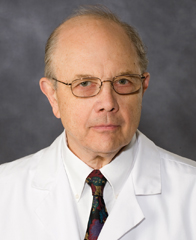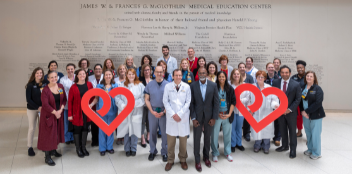Dr. Szentpetery, Recalls Transplant

Forty years ago, on May 8, 1977, VCU Medical Center, then known as MCV, made history when doctors undertook the first long-distance transplantation of a human heart. The retired cardiothoracic surgeon who made the 600-mile flight to Indianapolis and back, and directed the transplant, recently sat down with The Beat to remember the day.
Two years into his career as a surgeon, Dr. Szabolcs Szentpetery, had an exciting assignment: To fly from Richmond to Indianapolis and bring back a donor heart. The trip had been arranged with the help of the South-Eastern Organ Procurement Foundation, a predecessor to UNOS. SEOPF established the first computerized database to match donors and recipients from different hospitals earlier that year.
The organization chartered a Lear jet, which awaited him at the Richmond airport. There was just one problem: “We didn’t have an ice chest,” said Szentpetery. “Before we went to the airport, I had to buy one and that’s what we ended up putting the heart in.”
When asked if he was nervous about the day, he said, “Yes and no. It was unusual but we [Dr. Richard Lower and he] had already done experiments where we had kept a heart on ice for up to eight hours.” He noted that three to four hours is the ideal. “You don’t want to go to the limit.”
At the hospital in Indianapolis, Szentpetery removed the heart from the donor and put it on ice. He then flew back to Richmond. The plane had left Richmond at 7:07 p.m. and returned from Indianapolis at 12:05 a.m. With time of the essence, the transplant coordinator, who usually handled kidney transplants, picked up the young doctor at this airport.
“He had this old car that wouldn’t go much over 60, but he would drive at 80. So, we were kind of shaky by the time we got back here,” he recalled with a laugh.
Szentpetery took part in the transplant with Lower. “There’s always a risk, ‘Is the heart going to work or not?’ We didn’t really know. But it worked fine.”
The transplant was one of 300 that Szentpetery estimates he completed in his 30 years as a cardiothoracic surgeon. Before the early 1980s, transplants were undertaken without the benefit of cyclosporine, a key anti-rejection drug. Once cyclosporine began being used, “that made a tremendous difference” in mortality rates, he said.
Szentpetery started the heart transplant program at the Hunter Holmes McGuire Veteran Affairs Medical Center in 1981, one of only five in the country, and the only one serving veterans on the East Coast from Virginia to Maine. He also started the heart transplant program at Sentara Norfolk General Hospital in 1989.
From working in the lab and hospital with Lower—“a great teacher and excellent surgeon and scientist”—to starting the various programs and his first long-distance transplant, “it was a fascinating period of my life.”
Back to Spring-2018
Join our Pauley Consortium composed of patients, friends and advocates.

